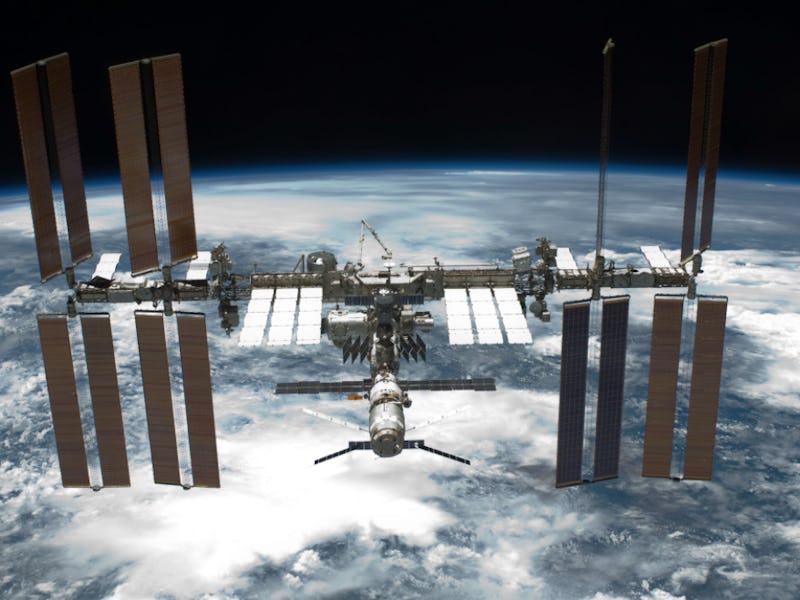NASA and SpaceX to Launch Massive Amount of Research to ISS Monday
“It sets a new bar for the amount of research we can get on a flight.”

On Monday, NASA and SpaceX will partner up once again to launch a Dragon spacecraft to the ISS. This time around, the Dragon will be carrying over 6,400 pounds of research, crew supplies and hardware to re-up the ISS. It will be the NASA’s 12th commercial resupply services mission — dubbed CRS-12 accordingly.
During a NASA press conference on Sunday, Josh Finch of NASA Communications said that at this point there was a 30 percent chance of launch complications due to weather. But if all goes well, following the Dragon’s launch towards the ISS, a SpaceX Falcon 9 that’s charged with carrying it towards orbit will make its way back to Landing Zone 1 at Cape Canaveral Air Force Station in Florida.
Following a two day journey, NASA astronaut Jack Fischer will use a 57-foot-long robotic arm aboard the ISS to grab the Dragon and secure it to the bottom of the Harmony module, which all sounds like an incredible thing to witness.
A SpaceX Dragon docking onto the ISS on March 3, 2013.
The payload capability of the CRS-12 mission is impressive, and shows how well the commercial partnership with with SpaceX is turning out for NASa. “It sets a new bar for the amount of research we can get on a flight,” said ISS deputy program manager Dan Hartman.
Although the research supplies being brought to the ISS pose exciting opportunities for discovery, Pete Hasbrook, associate program scientist for the ISS said that “maybe most importantly, [the Dragon will be] bringing experiments home.”
Although he didn’t elaborate as to what would would be on board, he said there would be around 2,600 pounds of research coming home. There are currently around 250 experiments being conducted aboard the ISS in various feilds, from biology labs to observations of Earth’s weather systems from above. Some experiments are being operated autonomously from the ground. “In some cases the crew are even part of the research,” added Hasbrook.
Over four weeks, crew members will unload the Dragon and then re-load it with experiments that have carefully been timed to arrive on Earth and straight into the hands of scientists. Hartman said he didn’t think it would take the crew long to get the Dragon open and unloaded. “I think the crew is aware that there are some frozen treats on this mission so I wouldn’t be surprised if they work long and hard.”
When asked by a reporter about NASA’s transition away from manning the ISS, and the organization’s step back in its role in the space sciences, Hartman took the familiarly retiring tone we’ve been hearing from NASA over the past few years. From his perspective, it seems that in five to 10 years, the majority of space science could likely be in the private sector’s hands. “We plan to leave it to the commercial markets to do that,” he said, explaining, “It is kind of like handing over the keys.”
The Falcon 9 liftoff on Monday is targeted for approximately 12:31 p.m.
Following the Dragon’s exit from the ISS in about four weeks — its estimated time return is September 17 — the spacecraft will land in the Pacific Ocean off the coast of California. It will then be retrieved, along with a treasure trove of space experiments.